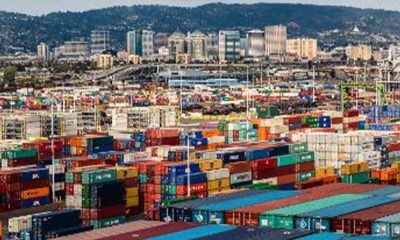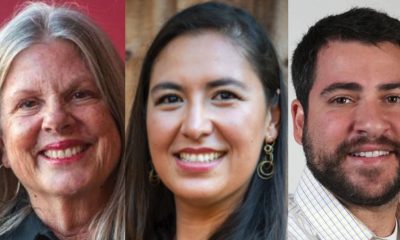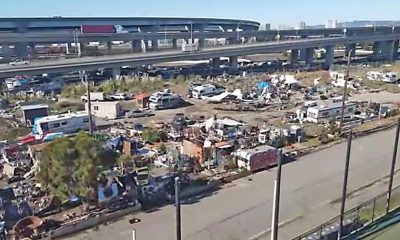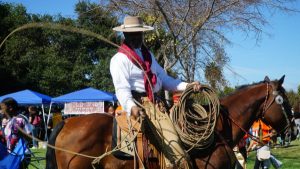Environment
Opinion: Coal Terminal Would Place Oakland on the Wrong Side of History
By Margaret Gordon and Brian Beveridge
Local businessmen Phil Tagami, Omar Benjamin and Jerry Bridges are on the wrong side of history as they pursue the construction of a coal export terminal at the Oakland Global Trade and Logistics Center.
Oakland Global is the modern new cargo handling facility envisioned for the old Oakland Army Base, and few ever imagined that it might support the fossil fuel industry.
Oakland owns the property, but in its zeal to close a deal for development, the city gave sweeping authority over business activities there to Master Developer Tagami, in exchange for a fixed annual income.
Now Tagami says he has the right to generate those lease payments by any means possible, including building facilities for a failing industry like coal.
There is a national sea change in attitude on fossil fuels, as demonstrated by U.S. leadership at the recent Paris COP21 conference and ongoing public statements against coal by Gov. Brown and Mayor Libby Schaaf.
One wonders why the developer would be willing to burn political capital for a project with near universal opposition.
The answer is as old as capitalism itself, money. Tagami’s development company California Capital Investment Group (CCIG) has never had deep enough pockets for a project of the scale and complexity of Oakland Global.
The Port of Oakland has broken off negotiations with CCIG on numerous occasions for Port projects because Tagami couldn’t produce adequate financial statements.
To fill that void Tagami has brought in a series of larger development partners, including ProLogis, one of the largest logistics developers in the world.
But Prologis didn’t sign on to underwrite the entire project, only to build their own small parcel in what is called the Central Gateway. In fact, Tagami stands to make millions of dollars as overall landlord of Oakland Global for the next 66 years – if he can hold on to the deal he struck.
But despite having too much responsibility with too little resources, Tagimi’s deal shares the City’s funding woes. Financial complications abound in the deal, starting with the need to match a state transportation grant of $242 million.
With a private investment estimated at $250 million, a loose bulk commodities terminal, as facilities handling grain, gravel, ore or coal are called, would by itself cover the entire matching funds requirement.
However, there are political solutions that don’t require selling out to fossil fuel development.
CCIG hasn’t got that kind of money or the apparent business ties to get it. Enter Bridges, Benjamin, and complex links to community development money in Utah. If the Federal Department of the Interior and the State of Utah were to allow it, $53 million of mining lease rebates intended to help working communities in Utah coal mining towns could instead be used to increase health impacts on communities all along the rail line from Utah to Oakland.
Tagami, Bridges and Benjamin can then use this bucket of public money to leverage Wall Street investments in their get-rich scheme.
According to the Virginian-Pilot newspaper, former Port of Oakland Executive Director Bridges has been shopping concepts for a coal export terminal somewhere in the country ever since he left his job as chief of the Virginia Port Authority.
That Port Authority rejected the coal idea, as did a port city in Florida. A very similar coal project was rejected in Oregon just last year, but Bridges and Benjamin are now in Oakland selling something no one else wants.
Even longshore workers, who are guaranteed the few potential jobs that a coal terminal would provide, have rejected the proposal for health and safety reasons.
Things have changed. Oakland no longer has to accept reject ideas. We’re not that broke any more. The Oakland economic Renaissance may bring its own problems of equity and opportunity, but we’re no longer holding out the begging-bowl to profiteers.
Oakland is an economic attraction on its way to being a new regional powerhouse. Emerging green tech industries don’t want to share the streets with dusty 19th Century dinosaurs like fossil fuel.
The Port of Oakland has signed lucrative deals to develop bulk grain and frozen food export facilities. Coal has no place in their business mix.
The amazing thing about this coal proposal is how it has galvanized opposition between groups in the region who don’t always see eye-to-eye: Big environmental groups, local grassroots coalitions, organized labor and the faith community all say we must put the health and safety of our communities ahead of money.
Margaret Gordon and Brian Beveridge are co-directors of the West Oakland Environmental Indicators Project (WOEIP).
Activism
Oakland’s ‘Green the Church,’ Others, Host a Climate Revival
On April 20, Oakland’s Green The Church California (GTC) and the Center For Food, Faith and Justice will celebrate Earth Day and present a Climate Revival event titled “Growing Healthy Communities From Soil To The Soul” at McGee Avenue Baptist Church at 1640 Stuart St, Berkeley, CA. The day will include inspiring talks, interactive workshops, networking opportunities, and a special panel on Food Sovereignty and Global Food Resilience.

Growing Healthy Communities from Soil to the Soul in Berkeley
By Y’Anad Burrell
On April 20, Oakland’s Green The Church California (GTC) and the Center For Food, Faith and Justice will celebrate Earth Day and present a Climate Revival event titled “Growing Healthy Communities From Soil To The Soul” at McGee Avenue Baptist Church at 1640 Stuart St, Berkeley, CA,
The day will include inspiring talks, interactive workshops, networking opportunities, and a special panel on Food Sovereignty and Global Food Resilience.
The keynote speaker is Rev. Danté R. Quick, PhD, senior pastor of First Baptist Church of Lincoln Gardens in Somerset, N.J. Quick is well known in the Bay Area, having served for more than 10 years as pastor of Friendship Missionary Baptist Church in Vallejo, CA.
Green The Church, founded in 2010 by Rev. Dr. Ambrose Carroll, Sr., and headquartered in Oakland, helps galvanize Black churches and their local communities and leaders to address issues critical to populations historically disengaged from conversations around pollution and health, climate change, and sustainability and energy efficiency.
The organization collaborates with major environmental, sustainability, food security, faith, and community-based non-profit organizations, and is committed to “creation justice”—care and justice for God’s people and the planet—and building the Beloved Community.
Environmental justice has long been a pressing concern for communities of color who bear the brunt of pollution and ecological degradation. Climate change exacerbates these issues, disproportionately impacting vulnerable communities. Recognizing this urgency, Black churches across the country are taking action.
With deep roots in the African American community and its commitment to social justice, the Black Church has become an essential advocate for sustainable practices and policies.
Over the past 14 years, in a powerful collaboration with significant environmental, sustainability, food security, faith, and community-based non-profit organizations, GTC has created a cadre of Black churches engaging in the environmental justice, climate, and sustainability movement.
GTC presently works with more than 1,000 pastors and congregations across the U.S., and groups in the Bahamas, Ghana, Nigeria, and the UK, showing that we can make a difference together.
The partnership between environmental justice advocates and the Black Church extends beyond individual congregations. Green The Church provides resources and support for faith communities seeking to address climate change and promote environmental justice.
Through collaboration, initiatives such as energy efficiency programs, solar installations, and environmental education have been implemented in Black churches nationwide. These efforts reduce the carbon footprint and save money on energy bills, benefiting the congregations and their communities.
The involvement of the Black Church in the fight against climate change is not just a participation, it’s a powerful message that galvanizes action across communities.
By integrating environmental justice into their ministry, Black churches are demonstrating that addressing climate change is not only a matter of science but also of social and moral responsibility, inspiring change at a grassroots level.
For more information, go to: www.greenthechurch.org.
Bay Area
Richmond’s Growing Bay Trail Boasts Bountiful Beauty
The Standard recently enjoyed a sunny-day stroll through Richmond’s Barbara and Jay Vincent Park and an exquisite section of the city’s ample share of San Francisco Bay Trail. Near Vincent Park’s entrance, the Bay Trail offers locals a front-row view of Richmond’s Marina, with an eclectic mix of boats and some of the city’s shoreline eateries like Lara’s Fine Dining and Anh Restaurant & Bar.
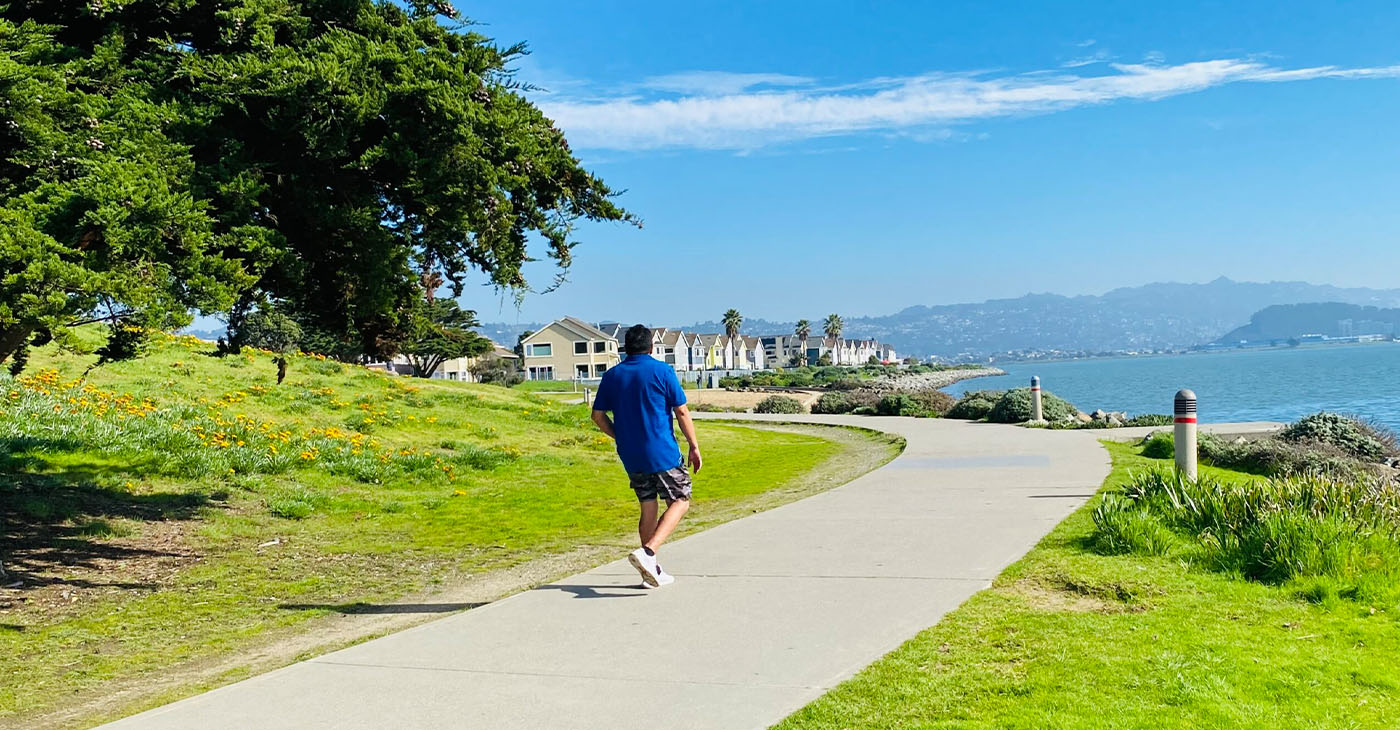
By Kathy Chouteau
The Richmond Standard
When was the last time you used the Bay Trail in Richmond?
The Standard recently enjoyed a sunny-day stroll through Richmond’s Barbara and Jay Vincent Park and an exquisite section of the city’s ample share of San Francisco Bay Trail.
Near Vincent Park’s entrance, the Bay Trail offers locals a front-row view of Richmond’s Marina, with an eclectic mix of boats and some of the city’s shoreline eateries like Lara’s Fine Dining and Anh Restaurant & Bar.
Stroll further into the park on the trail and you’ll spy the Craneway Pavilion and Rosie the Riveter Park’s Visitor Center across the water, as well as ample geese—and if your timing is right—a few sailboarders getting ready to launch into San Francisco Bay.
A great kids’ playground and BBQ grills also await in the well-used park. Follow the trail around the western bend to see the park’s small but picturesque beach and clear-day views of San Francisco, the Golden Gate Bridge and more. The Bay Trail will lead you to Berkeley and beyond if you’ve got the energy.
To this reporter, who has spent lots of time here, Vincent Park and the Bay Trail are some of Richmond’s most stunning outdoor gifts for its people.
‘Gifts’ because our outdoor views don’t cost a thing yet deliver a quiet joy ready to reenergize you for the week. And for your kids and four-legged friends, there’s a world of sea creatures, shells, and other outdoor ephemera to discover after a dig in the sand.
Take it from someone who originally hails from a land-enclosed state, and a city where the most interesting hyper-local views were of the Bethlehem Steel mill in Bethlehem, Pa.
While my native city’s steel might have been used to build the Golden Gate Bridge and WWII ships, and this reporter has deep love for her hometown, trust me when I say that people in ‘the Rich’ are privy to some of the best views I’ve ever seen in our country.
According to the Trails for Richmond Action Committee (TRAC), Richmond has more than 32 miles of shoreline, which is more than any other city on San Francisco and San Pablo Bays. The Bay Trail currently has more than 300 miles completed of 500 planned for the trail around both bays. Enjoy Richmond’s bounty!
Want to learn more about the Bay Trail in Richmond? Check out TRAC.
California Black Media
After Severe Storms Kill 12, State Warns of Ongoing Dangers
State authorities and elected officials around California are thanking 8,500 first responders for their combined efforts over the past weeks to save lives during severe storms that killed 12 people, contributed to intense flooding, led to power outages, downed trees and caused more than $10 million in damages.
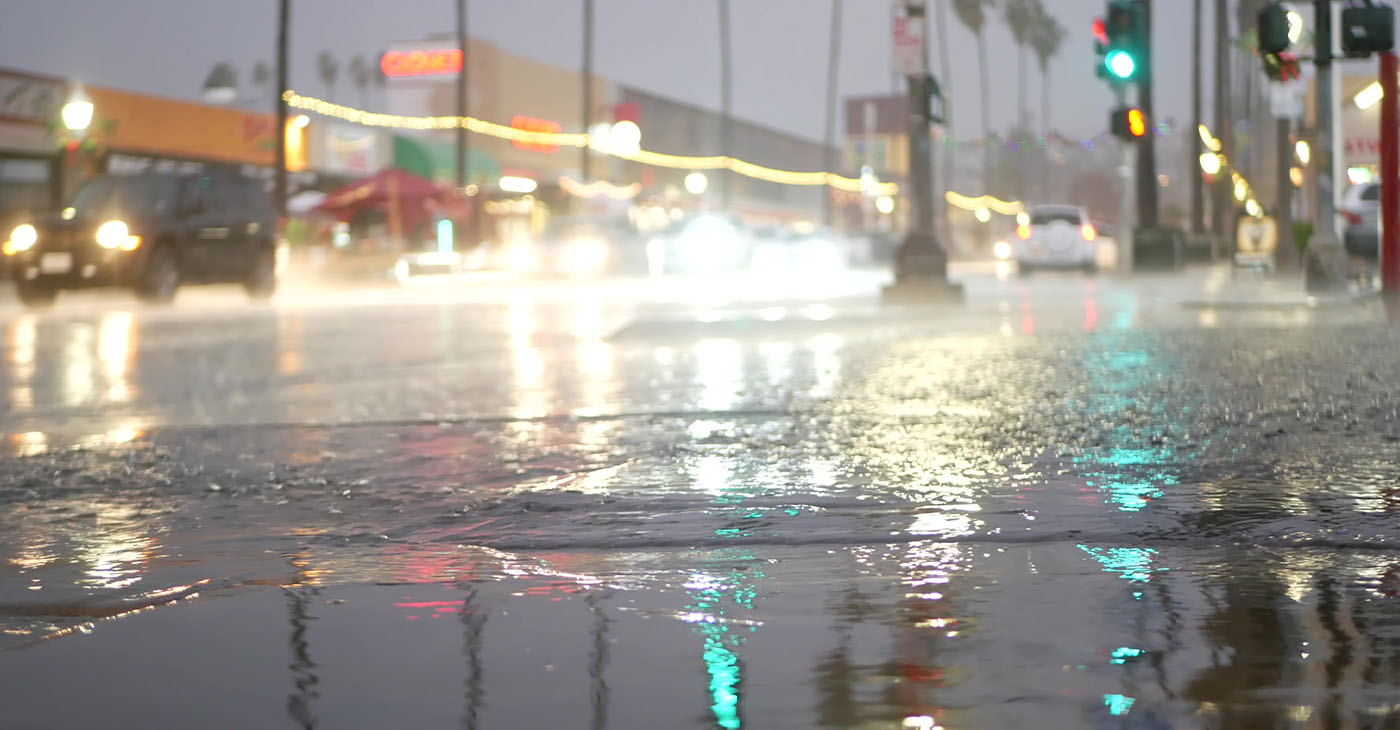
By California Black Media
State authorities and elected officials around California are thanking 8,500 first responders for their combined efforts over the past weeks to save lives during severe storms that killed 12 people, contributed to intense flooding, led to power outages, downed trees and caused more than $10 million in damages.
They are also directing Californians to resources to address losses they may have suffered during the storms and warning them of ongoing dangers.
“We mobilized an all-of-government response, including our swift water rescue teams that have made 47 rescues,” said Gov. Gavin Newsom. “We’re grateful to our thousands of first responders who have saved countless lives and kept our state going in the face of record-breaking rainfall and snow.”
On Feb. 4, the Governor declared a state of emergency in eight counties: Los Angeles, Ventura, Orange, San Bernardino, San Luis Obispo, Santa Barbara, Riverside and San Diego.
On Feb. 7, Newsom followed up by requesting a major disaster declaration from the White House to support San Diego County as it recovers from the storms.
“The late January storm saw record-breaking rain in San Diego, where the worst impacts were felt in lower-income neighborhoods. Many folks saw damage to their life’s work that can’t be recovered without federal support,” the Governor said.
On Feb 10, the Governor’s Office for Emergency Services (CalOES) provided safety tips for returning home aimed at Californians who had to evacuate, including how to deal with accumulated muck, mud and debris.
In Sacramento County, a 63-year-old woman was found dead under a large fallen tree in her backyard.
Effects of recent storms can weaken trees, leading to falling branches or even entire trees, which can cause damage to homes, and vehicles and pose a threat to public safety, according to Cal OES.
The sudden occurrence of toppled trees, fallen branches or uprooted trees saturated by standing water creates hazardous conditions for pedestrians, motorists, power lines and homes.
CalOES is urging Californians to stay informed about whether forecasts, and informed the public that it is still assessing storm damages.
-

 Activism4 weeks ago
Activism4 weeks agoOakland Post: Week of March 27 – April 2, 2024
-

 #NNPA BlackPress4 weeks ago
#NNPA BlackPress4 weeks agoBeloved Actor and Activist Louis Cameron Gossett Jr. Dies at 87
-

 Community1 week ago
Community1 week agoFinancial Assistance Bill for Descendants of Enslaved Persons to Help Them Purchase, Own, or Maintain a Home
-

 Activism3 weeks ago
Activism3 weeks agoOakland Post: Week of April 3 – 6, 2024
-

 Business1 week ago
Business1 week agoV.P. Kamala Harris: Americans With Criminal Records Will Soon Be Eligible for SBA Loans
-

 Activism2 weeks ago
Activism2 weeks agoOakland Post: Week of April 10 – 16, 2024
-

 Community1 week ago
Community1 week agoAG Bonta Says Oakland School Leaders Should Comply with State Laws to Avoid ‘Disparate Harm’ When Closing or Merging Schools
-

 Community6 days ago
Community6 days agoOakland WNBA Player to be Inducted Into Hall of Fame






